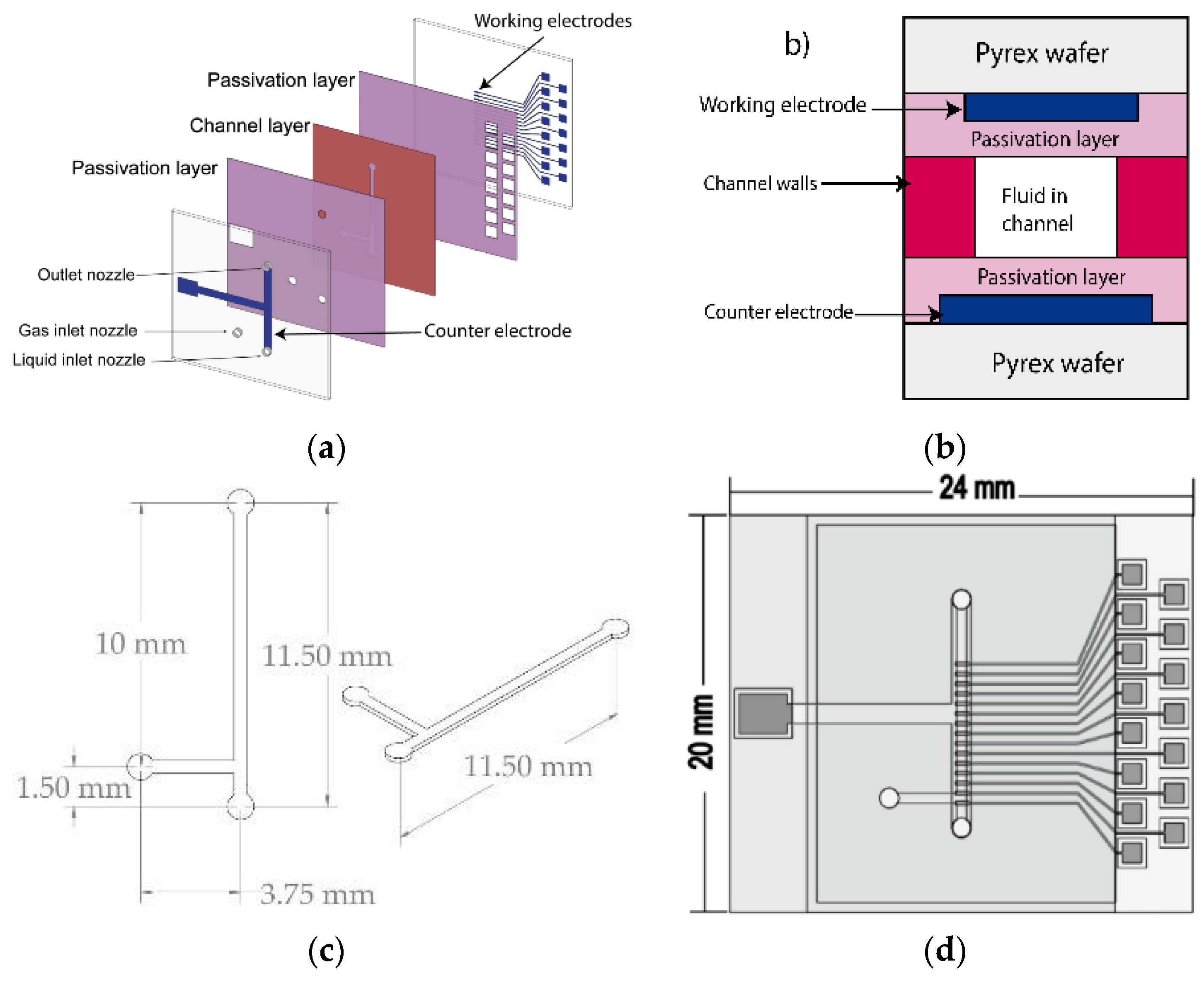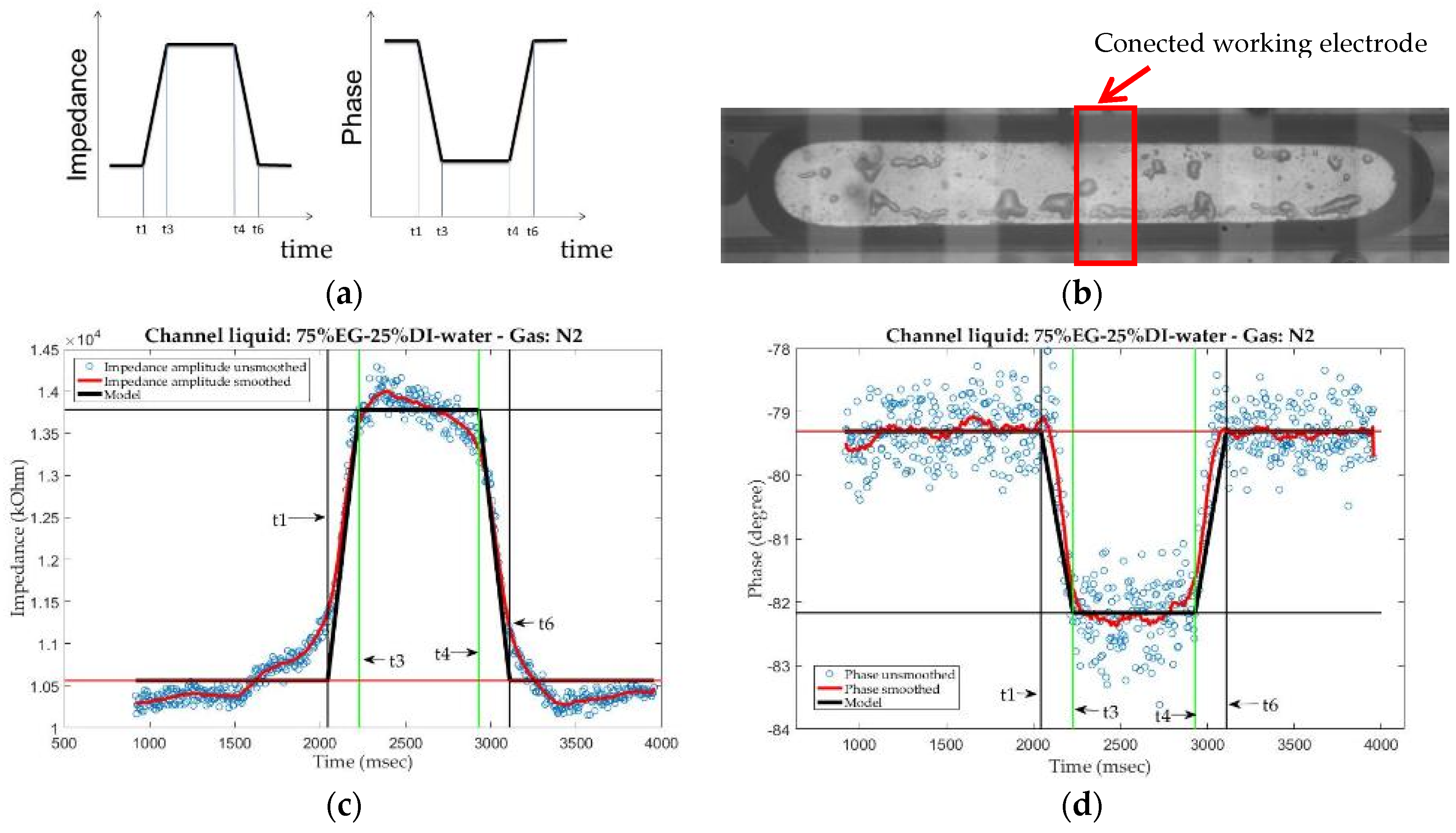Transparent Glass/SU8-Based Microfluidic Device with on-Channel Electrical Sensors †
Abstract
:1. Introduction
2. Working Principle and Microchip Design
Microreactor Chip Design
3. Microfabrication Process and Experimental Test Setup
3.1. Microfabrication Process
3.2. Hydrodynamic Test Setup
4. Conclusions
Author Contributions
Acknowledgments
Conflicts of Interest
References
- Isgor, P.K.; Marcali, M.; Keser, M.; Elbuken, C. Microfluidic droplet content detection using integrated capacitive sensors. Sens. Actuators B Chem. 2015, 210, 669–675. [Google Scholar] [CrossRef]
- Vulto, P.; Huesgen, T.; Albrecht, B.; Urban, G.A. A full-wafer fabrication process for glass microfluidic chips with integrated electroplated electrodes by direct bonding of dry film resist. J. Micromech. Microeng. 2009, 19, 77001. [Google Scholar] [CrossRef]
- Iliescu, C.; Poenar, D.P.; Carp, M.; Loe, F.C. A microfluidic device for impedance spectroscopy analysis of biological samples. Sens. Actuators B Chem. 2007, 123, 168–176. [Google Scholar] [CrossRef]
- Gijsenbergh, P.; Puers, R. Permittivity-based void fraction sensing for microfluidics. Sens. Actuators A Phys. 2013, 195, 64–70. [Google Scholar] [CrossRef]
- Sabuncu, A.C.; Zhuang, J.; Kolb, J.F.; Beskok, A. Microfluidic impedance spectroscopy as a tool for quantitative biology and biotechnology. Biomicrofluidics 2012, 6, 34103. [Google Scholar] [CrossRef] [PubMed]
- Elbuken, C.; Glawdel, T.; Chan, D.; Ren, C.L. Detection of microdroplet size and speed using capacitive sensors. Sens. Actuators A Phys. 2011, 171, 55–62. [Google Scholar] [CrossRef]




Publisher’s Note: MDPI stays neutral with regard to jurisdictional claims in published maps and institutional affiliations. |
© 2017 by the authors. Licensee MDPI, Basel, Switzerland. This article is an open access article distributed under the terms and conditions of the Creative Commons Attribution (CC BY) license (https://creativecommons.org/licenses/by/4.0/).
Share and Cite
Talebi, M.; Cobry, K.; Sengupta, A.; Woias, P. Transparent Glass/SU8-Based Microfluidic Device with on-Channel Electrical Sensors. Proceedings 2017, 1, 336. https://doi.org/10.3390/proceedings1040336
Talebi M, Cobry K, Sengupta A, Woias P. Transparent Glass/SU8-Based Microfluidic Device with on-Channel Electrical Sensors. Proceedings. 2017; 1(4):336. https://doi.org/10.3390/proceedings1040336
Chicago/Turabian StyleTalebi, Mohammadmahdi, Keith Cobry, Ananya Sengupta, and Peter Woias. 2017. "Transparent Glass/SU8-Based Microfluidic Device with on-Channel Electrical Sensors" Proceedings 1, no. 4: 336. https://doi.org/10.3390/proceedings1040336




